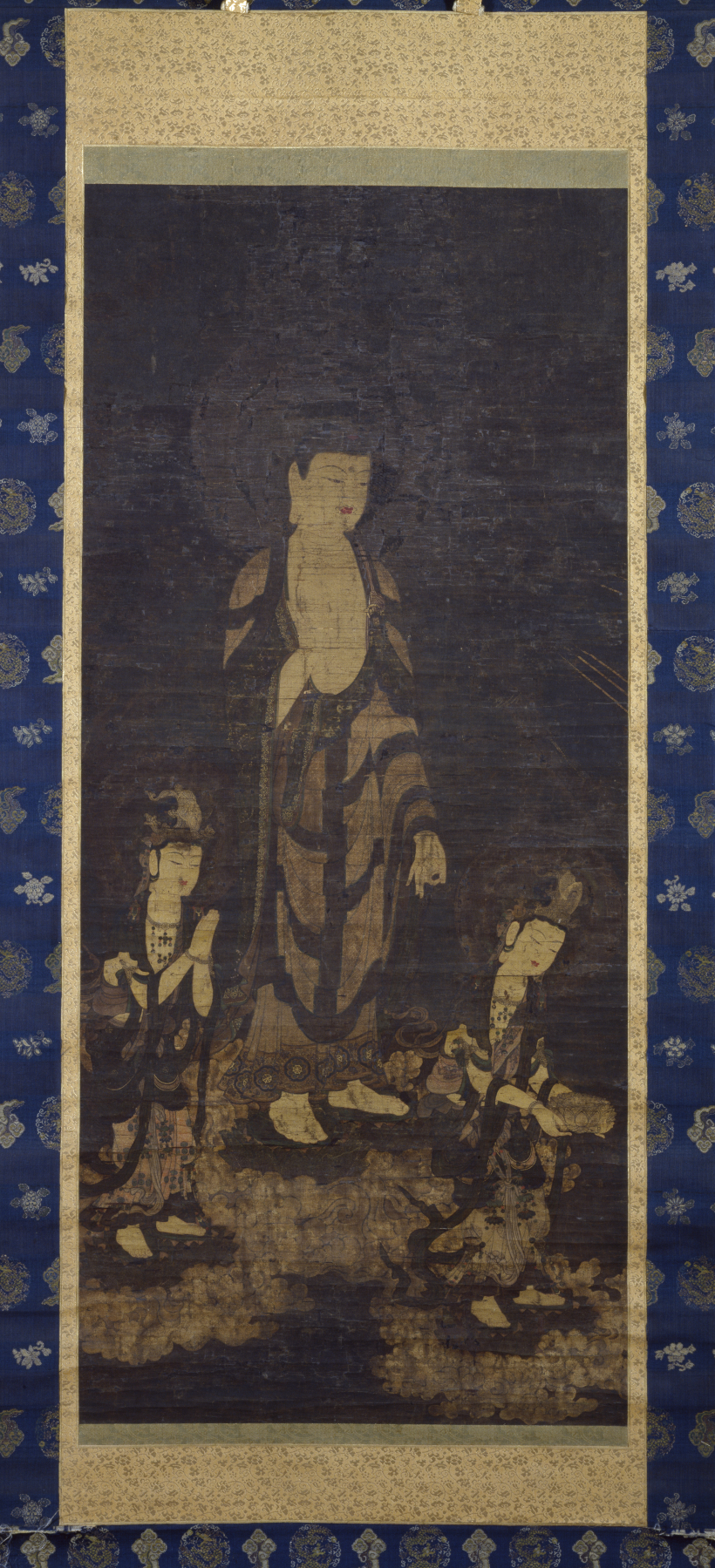The Buddha Amida's Descent
(Japan and Korea )
According to Japanese Buddhists of the Pure Land sect, mere faith in Amida (Amitabha), the Buddha of the western paradise, will be rewarded with rebirth there. In this painting, Amida descends to greet the believer at death. He is accompanied by his attendants Seishi and Kannon (Avalokitesvara), who holds the lotus throne that will carry the believer's soul to paradise. "I shall go when Amida comes to invite me; a ray of light suddenly shines forth between his eyebrows; music sounds out anew astonishing my ears."
Inscription
Provenance
Provenance (from the French provenir, 'to come from/forth') is the chronology of the ownership, custody, or location of a historical object. Learn more about provenance at the Walters.
Yamanaka & Co., New York [date and mode of acquisition unknown]; Henry Walters, Baltimore, 1920, by purchase; Walters Art Museum, 1931, by bequest.
Conservation
| Date | Description | Narrative |
|---|---|---|
| 8/1/1988 | Examination | examined for condition |
| 1/1/1989 | Treatment | cleaned; stabilized; mounted; loss compensation |
| 6/27/2007 | Examination | examined for condition |
Geographies
Japan (Place of Origin)
Measurements
L: 50 x W: 22 1/4 in. (127 x 56.5 cm)
Credit Line
Acquired by Henry Walters, 1920
Location in Museum
Not on view
Accession Number
In libraries, galleries, museums, and archives, an accession number is a unique identifier assigned to each object in the collection.
In libraries, galleries, museums, and archives, an accession number is a unique identifier assigned to each object in the collection.
35.68


